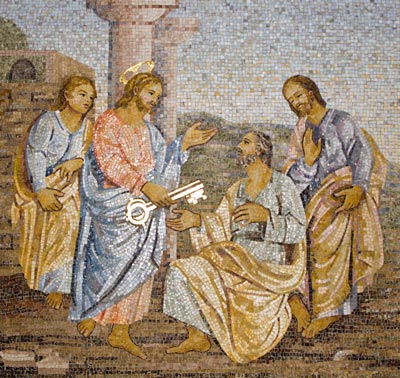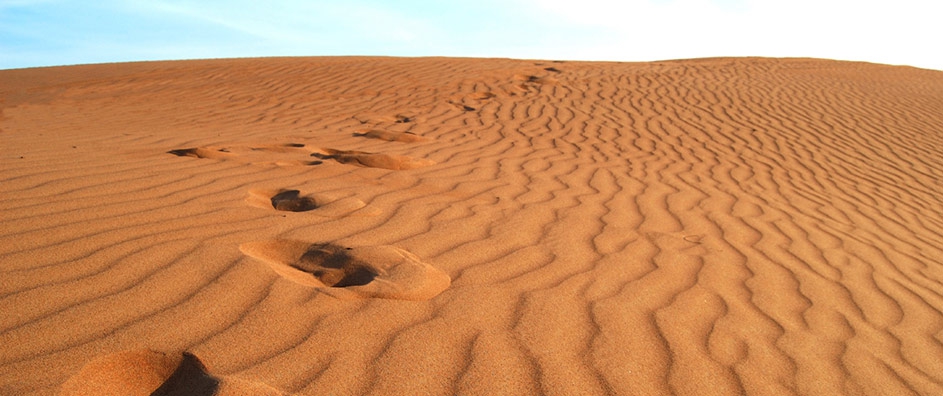The views expressed in our content reflect individual perspectives and do not represent the authoritative views of the Baha'i Faith.
From this most august and exalted station, and from this most sublime and glorious plane, the seeker entereth the City of Immortality, therein to abide forever. . . Erelong shall the faithful behold, in the day of the latter Resurrection, Him Whom God shall make manifest descending with this city from the heaven of the Unseen, together with a company of His exalted and favoured angels. – Baha’u’llah, Gems of Divine Mysteries, pp. 71–72, 73.
This article addresses an abstruse topic: the Journey to the City of God. It is a mystic quest common to Christianity and the Baha’i Faith alike, and to other religions as well.
In the previous article, the figure of St. Peter, the Apostle, analogized the spiritual path of the seeker after truth to that of a traveler on a highway leading to a city:
Wherefore I advise that we should first seek His Justice so that when we shall travel thereon, as if on a highway, we shall be able to overtake the True Prophet, not by swiftness of feet, but by good deeds. . . . Be it known to you, therefore, the highway is good discipline and deeds and the travelers of the highway are those who do good things. But the gate is the Prophet and the city is the Kingdom, wherein the Father eternally sits before everyone and makes ready to be seen by those who have pure hearts. Therefore, it should not weary us to travel on the highway, for at the end of the highway there is rest. For even he, the True Prophet, from the beginning of the world hastens us to rest and runs with us to eternity. – The Travels of Peter: The Syriac Clementine Recognitions and Homilies: The First Complete Translation of the Text, by Joseph Glen Gebhardt (Grave Distractions Publications, 2014), pp. 107–108 (Syr. Rec. 2:22).
Baha’u’llah adopts a similar allegory in his most mystical work, The Seven Valleys:
For in this Valley the traveler is flung into confusion, albeit, in the eye of him who hath attained, such marvels are esteemed and well beloved. At every moment he beholdeth a wondrous world, a new creation, and goeth from astonishment to astonishment, and is lost in awe at the works of the Lord of Oneness. . . . All these states are to be witnessed in the Valley of Wonderment, and the traveler at every moment seeketh for more, and is not wearied. – Baha’u’llah, The Seven Valleys, pp. 32, 33–34.
The wayfarer on the spiritual path — whether Christian or Baha’i or seeker of truth and perfection in a parallel sacred tradition — can, after much devotion and discipline, reach his or her celestial destination. The traveler on the road to the City of the Presence of God — in the form of God’s appearance as Jesus or as Baha’u’llah — is possible. It is promised to the pure in heart. In fact, this City dwells within the human heart:
For were they to reach the ultimate object of their quest for God and their attainment unto Him, they would have but reached that abode which hath been raised up within their own hearts. – Baha’u’llah, Gems of Divine Mysteries, p. 74
Although this is this City of the Presence of God, it is an altogether ineffable and indescribable realm:
From this station the wayfarer ascendeth unto a City that hath no name or description, and whereof one heareth neither sound nor mention. Therein flow the oceans of eternity, whilst this city itself revolveth round the seat of eternity. Therein the sun of the Unseen shineth resplendent above the horizon of the Unseen, a sun that hath its own heavens and its own moons, which partake of its light and which rise from and set upon the ocean of the Unseen. – Baha’u’llah, Gems of Divine Mysteries, p. 77.
It is possible to attain the Presence (i.e. Theophany, or “appearance” or “Manifestation”) of God, but not of God in essence. Here’s why:
How then could they ever hope to ascend unto such realms as have not been ordained for them or created for their station? Nay, though they journey from everlasting to everlasting, they will never attain unto Him Who is the midmost Heart of existence and the Axis of the entire creation, He on Whose right hand flow the seas of grandeur, on Whose left stream the rivers of might, and Whose court none can ever hope to reach, how much less His very abode! For He dwelleth in the ark of fire, speedeth, in the sphere of fire, through the ocean of fire, and moveth within the atmosphere of fire. How can he who hath been fashioned of contrary elements ever enter or even approach this fire? Were he to do so, he would be instantly consumed. – Baha’u’llah, Gems of Divine Mysteries, pp. 74–75.
 This is why it behind my question this statement in the Travels of Peter: “But the gate is the Prophet and the city is the Kingdom, wherein the Father eternally sits before everyone and makes ready to be seen by those who have pure hearts.” This may be an allusion to Rev. 21:23. Since Baha’u’llah’s name means the “Glory of God,” a Baha’i might interpret this verse so: “And the city had no need of the sun, neither of the moon, to shine in it: for the Glory of God (Baha’u’llah) did lighten it, and the Lamb (Jesus, and/or the Bab) is the light thereof.”
This is why it behind my question this statement in the Travels of Peter: “But the gate is the Prophet and the city is the Kingdom, wherein the Father eternally sits before everyone and makes ready to be seen by those who have pure hearts.” This may be an allusion to Rev. 21:23. Since Baha’u’llah’s name means the “Glory of God,” a Baha’i might interpret this verse so: “And the city had no need of the sun, neither of the moon, to shine in it: for the Glory of God (Baha’u’llah) did lighten it, and the Lamb (Jesus, and/or the Bab) is the light thereof.”
In case you are confused, simply consider this statement of Jesus: “I and my Father are one.” (John 10:30.) From the Baha’i perspective, Jesus is God in nature, not God in essence.
Readers will recall that Baha’u’llah’s predecessor called himself the Bab (the “Gate”). Here, we see the very same metaphor — transformed into a symbol — of which the figure of St. Peter spoke in the Travels of Peter: “But the gate is the Prophet and the city is the Kingdom.”
This is the journey to the centre of the heart, of which Baha’u’llah writes:
If the travelers seek after the goal of the Intended One (maqṣúd), this station appertaineth to the self—but that self which is “The Self of God standing within Him with laws.” On this plane, the self is not rejected but beloved; it is well-pleasing and not to be shunned. . . . This is the plane of the soul who is pleasing unto God. Refer to the verse:
O thou soul who art well assured,
Return to thy Lord, well-pleased, and pleasing unto Him.which endeth:
Enter thou among My servants,
And enter thou My paradise.– Baha’u’llah, The Seven Valleys And the Four Valleys , p. 50.
In the Baha’i view, Jesus is “The Self of God standing within Him with laws.” So is the Bab. So is Baha’u’llah, along with each of the other great Messengers of God who, throughout history, brought spiritual teachings and social laws.
Let’s close with the opening quote: “Erelong shall the faithful behold, in the day of the latter Resurrection, Him Whom God shall make manifest descending with this city from the heaven of the Unseen.” “Him Whom God shall make manifest” is the Messenger of God whom the Bab foretold, that is, Baha’u’llah, who dwells in “that abode which hath been raised up within their own hearts.”
















Comments
Sign in or create an account
Continue with Googleor